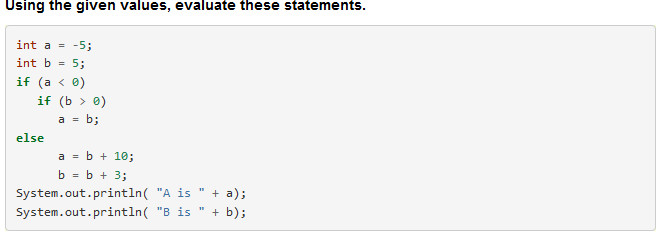How do I use subgoals?
Subgoal labelled worked examples and practice problems are effective when students are beginning to learn a new concept. You can present the subgoal labels first (as pre-teaching, see Figure 1) before explaining the concept, or immediately after explaining the concept. You can then present one or more subgoal labelled worked examples (see Figure 2) to show how the subgoal labels are applied with the concept.

Figure 1. Subgoal labels for selection statements

Figure 2. Sample worked example
Following the explanation of the worked example(s), students should have the opportunity to practice using the subgoal labels to solve both similar and novel problems – practice problems (see Figure 3). At this point it is helpful if students have a reference sheet with the subgoals (see Figure 1) on it while working through the practice problems.

Figure 3. Sample practice problem
Subgoal labels can also be used for formative assessment in various ways:
- Present a problem with the subgoal labels only and have students write the code for one or more subgoal labels
- Present a problem with its solution and have students identify which parts of the solution belong to which subgoal label
- Use Parsons problems (with or without subgoal labels) as a lower cognitive load means to demonstrate solution knowledge
- Have students compare solutions to similar problems and compare the similarity and differences for the code belonging to each subgoal label.



